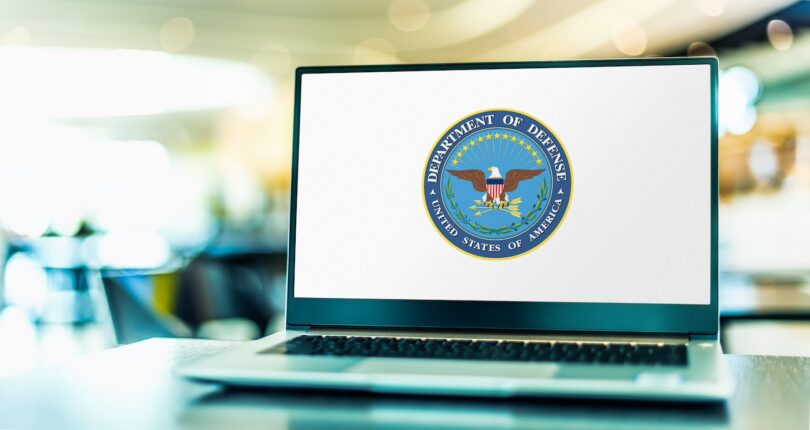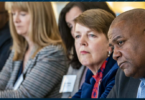By Roddy Rasti, Karl Feld, Victoria Leoni and Lee Hill for the Defense Information School, a component of the Defense Media Activity.
Across airwaves and oceans, on flight lines and frontlines, Department of Defense (DoD) communicators are there, telling the story of America’s military.
We recently completed 21 focus groups and in-depth interviews with graduates of the Defense Information School’s Mass Communication Foundations (MCF) course. Commissioned at the school Commandant’s request, these groups aimed to better understand any potential training gaps between the MCF course and real-world fleet and field expectations and requirements at duty stations worldwide.
The insights gleaned from 49 graduates and 34 supervisors of graduates shed light on the wide-ranging roles and activities of DoD mass communicators in today’s U.S. military operating environments.
These communications professionals practice public relations, write short- and long-form copy, operate overseas radio stations, manage social media for military units, explain military concepts, prepare senior leaders for interviews, manage production workflows, archive materials and create graphics and multimedia content. Most communicators for the Department of Defense also create imagery, audio and video.
Essential communications skills endure.
In the focus groups, service members acknowledged photography, videography, writing and storytelling remain essential for capturing and curating quality content and messaging. Traditional media skills such as radio broadcasting and television production are still vital. The DoD continues to manage its own television and radio service, American Forces Network, to communicate with service members and their families — even as it also rolls out on-demand streaming of video and radio.
When conducting interviews, capturing raw footage in the field, lighting a shot or running a soundboard for Facebook Live, proper techniques remain important, the service members agreed.
Knowing how to employ the right gear at the right time is key. Sometimes that means making difficult choices about what equipment to bring and what to leave behind, depending on the operating environment.
There are many flavors of military communications.
Service members cited a range of different communications skills they use on the job. Many graduates, especially in smaller services such as the U.S. Marine Corps or U.S. Coast Guard, work independently or in small shops, where they’re required to use all the skills they’ve learned. Graduates who work in larger services tend to specialize, using only select skills.
The experiences of military mass communicators are far from homogeneous. Each branch of the military has its own culture, challenges, rituals and even language. Mass communicators in each service are expected to fulfill specialized roles within their specific environments.
For example, service members deployed on ships or in submarines often go weeks or months without internet connections or access to online resources. These units rely on printed materials to disseminate information, making print-shop training more relevant for afloat sailors and Marines than for airmen or soldiers.
Some Navy vessels also have their own broadcasting systems onboard, which require specialized skills to operate. Some sailors are responsible for documenting sensitive incidents at sea and for collecting intelligence. The imagery they collect conveys the facts and the context of encounters with foreign military assets, helping the U.S. military fight propaganda and win the narrative battle.
For military, PR challenges are heightened.
Across the branches, communicators in the military face many of the same challenges that confront the PR industry at large, but heightened by the magnitude of their mission and operating environments.
As with civilian PR, social media has assumed a dominant role in military public affairs. Just like their civilian counterparts, military public affairs practitioners must create social media content and manage social media platforms, some as their first assignments. But in the military, the stakes for social media are higher and the operating environments are more complex.
No PR practitioner can escape having to deal with social media users who make harassing or even threatening comments. Navigating these situations requires social and political finesse. Service members responsible for official military accounts must engage with both friendly and hostile audiences while complying with DoD and service standards. Some graduates of the Defense Information School’s communication course we spoke to emphasized the challenge of responding to disgruntled audience members who are veterans themselves.
Similarly, the threats of audience-contributed misinformation and disinformation on official DoD and service social media accounts are of concern. In an information environment where many adversaries treat social media as a weapon of asymmetric warfare, the need for vigilance is high.
Like their civilian counterparts, military communicators must also use social media to help achieve objectives. Public affairs officers in the Coast Guard, for example, rely on social media to communicate with the public during search-and-rescue operations.
Whether providing information to the public or internally, communicators for the Department of Defense will continue to tell the vital stories of America’s armed forces.
About the study:
The study’s authors held a series of focus groups with service members who graduated from the Defense Information School’s Mass Communication Foundations course between March 1, 2021, and March 31, 2022, along with supervisors of graduates. The research sought feedback on which elements of the course should be retained. The researchers also tried to identify shortfalls in the course and demands for new communications capabilities, as well as ways to improve outcomes for students.
[Photo credit: monticellllo]






